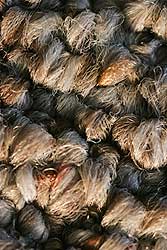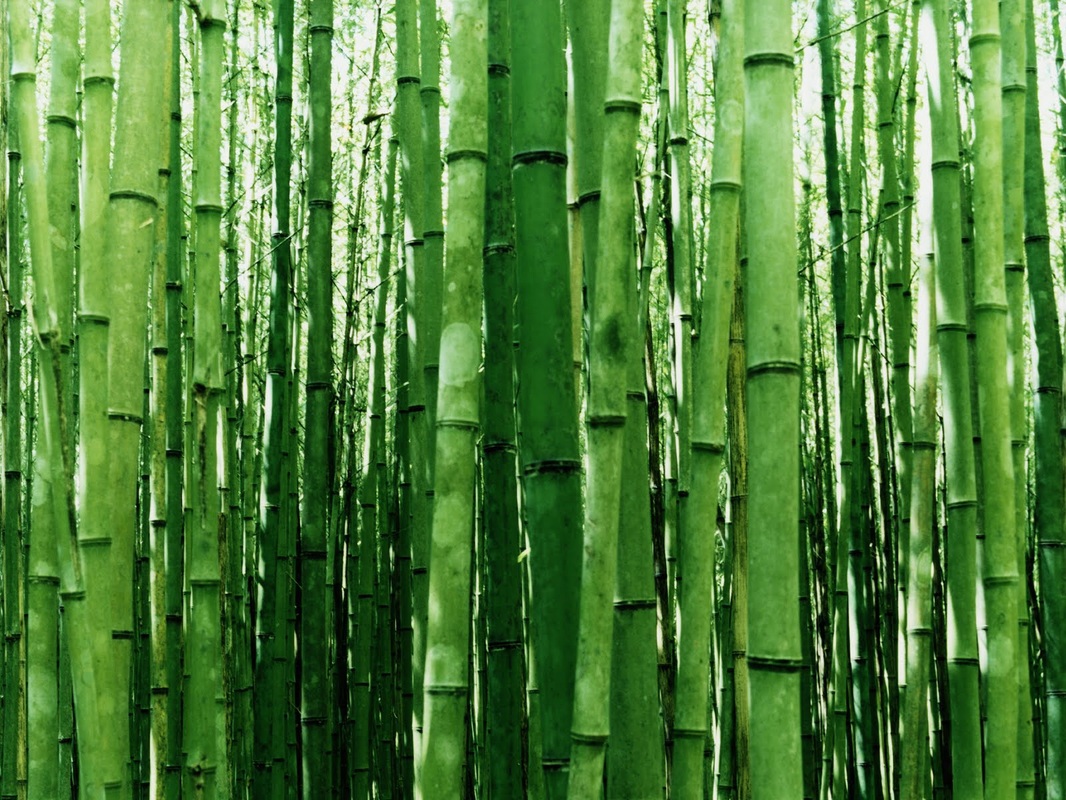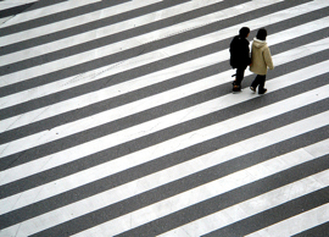The composition can be interpreted as a way of structuring elements in the image so that the resulting image has a meaning, quality, aesthetic and full of messages conveyed by the photographer can be captured by the people who saw the picture. The elements in the picture includes the line (line), form (shape), shape (form), texture (texture) and pattern (pattern). Way of structuring the composition in the viewfinder (viewfinder) will be interpreted and then once the image is printed. The main thing is to produce a composition aspect of the visual impact (visual impact) for people who look at the picture or in other words, the photographer is able to show his feelings and expression through media images.
1. The line element (Line)
Line is the most important element of another element because the line would not exist without form, without any shape and form would not exist without the lines and shapes will not be any pattern (pattern). Everyday we always see the line element, is only possible because our eyes are not too accustomed to notice. Horizon (the horizon), the flow of the river, shoreline, paddy fields, roads, railroads, stairs, buildings, and other ceramic tiles. Lines everywhere. Basically the line can be divided into 4 types: vertical, horizontal, diagonal and curved.
Vertical lines
Vertical line interprets the impression of dignity, grandeur, power and full power. This line can be found on buildings, trees, fences, people standing, etc..
Horizontal lines
Suggests calmness, peace, permanent and sturdy as those who sleep lying down in the grass, the flowers in the field, the flatness of the desert or lake. Avoid using a horizontal line right in the middle of the picture because it would give the impression of rigid.
Diagonal lines
This line gives the sensation of force, energy and motion as seen in the trees bent by the wind, runners at the starting line or the slope as it rises into the sky. Additionally diagonal lines can also be used to guide the eye towards the main object to be shown. By knowing these elements photographer can create the impression of strength, energy and motion simply by tilting the camera to make objects appear to be in a diagonal line.
Curve
Curved lines have a dynamic character and not as stiff as the other line elements. This element provides high aesthetic touches on the image. Examples of objects with curved lines commonly found in nature such as the shape of the mountain, the curve of the coast, leaf tips, etc.
1. The line element (Line)
Line is the most important element of another element because the line would not exist without form, without any shape and form would not exist without the lines and shapes will not be any pattern (pattern). Everyday we always see the line element, is only possible because our eyes are not too accustomed to notice. Horizon (the horizon), the flow of the river, shoreline, paddy fields, roads, railroads, stairs, buildings, and other ceramic tiles. Lines everywhere. Basically the line can be divided into 4 types: vertical, horizontal, diagonal and curved.
Vertical lines
Vertical line interprets the impression of dignity, grandeur, power and full power. This line can be found on buildings, trees, fences, people standing, etc..
Horizontal lines
Suggests calmness, peace, permanent and sturdy as those who sleep lying down in the grass, the flowers in the field, the flatness of the desert or lake. Avoid using a horizontal line right in the middle of the picture because it would give the impression of rigid.
Diagonal lines
This line gives the sensation of force, energy and motion as seen in the trees bent by the wind, runners at the starting line or the slope as it rises into the sky. Additionally diagonal lines can also be used to guide the eye towards the main object to be shown. By knowing these elements photographer can create the impression of strength, energy and motion simply by tilting the camera to make objects appear to be in a diagonal line.
Curve
Curved lines have a dynamic character and not as stiff as the other line elements. This element provides high aesthetic touches on the image. Examples of objects with curved lines commonly found in nature such as the shape of the mountain, the curve of the coast, leaf tips, etc.

Application of Shape Elements (Shape)
2. Element Shape (Shape)
Way objects are connected to each other to form a 2-dimensional plane in the image into a form able to draw the eye to identify the object. With the composition of the picture will seem more dynamic, balanced, well-organized and interesting to watch. Examples of the application of the element composition in the form of images is when shooting 3 people at once in a single photograph, if all three are set up the same height it will get a photo rigid and less pleasing to the eye. Another case if all three are arranged to form a triangle then your overall image will look more dynamic, balanced and interesting.

Application of Elements of Being (form)
3. The form elements (Form)
Basically element form (Form) is a 3-dimensional shape of the element (Shape). Form element is when we see the 3 dimensions of the object in the image and the elements will give you the depth of focus of the image. Like the example form looks like an orange ball (3-dimensional) and not like a dish (2-dimensional). To emphasize the subject in the form of photography, the use of light and shadow is very important to note.
Basically element form (Form) is a 3-dimensional shape of the element (Shape). Form element is when we see the 3 dimensions of the object in the image and the elements will give you the depth of focus of the image. Like the example form looks like an orange ball (3-dimensional) and not like a dish (2-dimensional). To emphasize the subject in the form of photography, the use of light and shadow is very important to note.

Texture
4. Element Texture (Texture)
Elements give the impression of three-dimensional texture, tend to abstract and give depth to the image of the object when done with the right lighting. Texture can be seen clearly on two different sides of that is texture are found if the photographer to get closer to the object to enlarge the view and texture where the object away from the photographer to see the vast landscape. Texture can also be seen when light hits the surface with a low angle or when the object is illuminated by oblique light source to form the same shadow in a particular area.

Pattern
5. Element Pattern (Pattern)
Pattern is the repetition of element shape, form and texture are visual elements that can attract attention. In everyday life a little repetition sometimes cause boredom, but when applied in the repetition of photography into something interesting and beautiful to behold. Secrets of the use of pattern in the picture is to find variations that can attract the attention of observers but keep in mind that too much uniformity in the pattern will cause the image to be boring.




 RSS Feed
RSS Feed